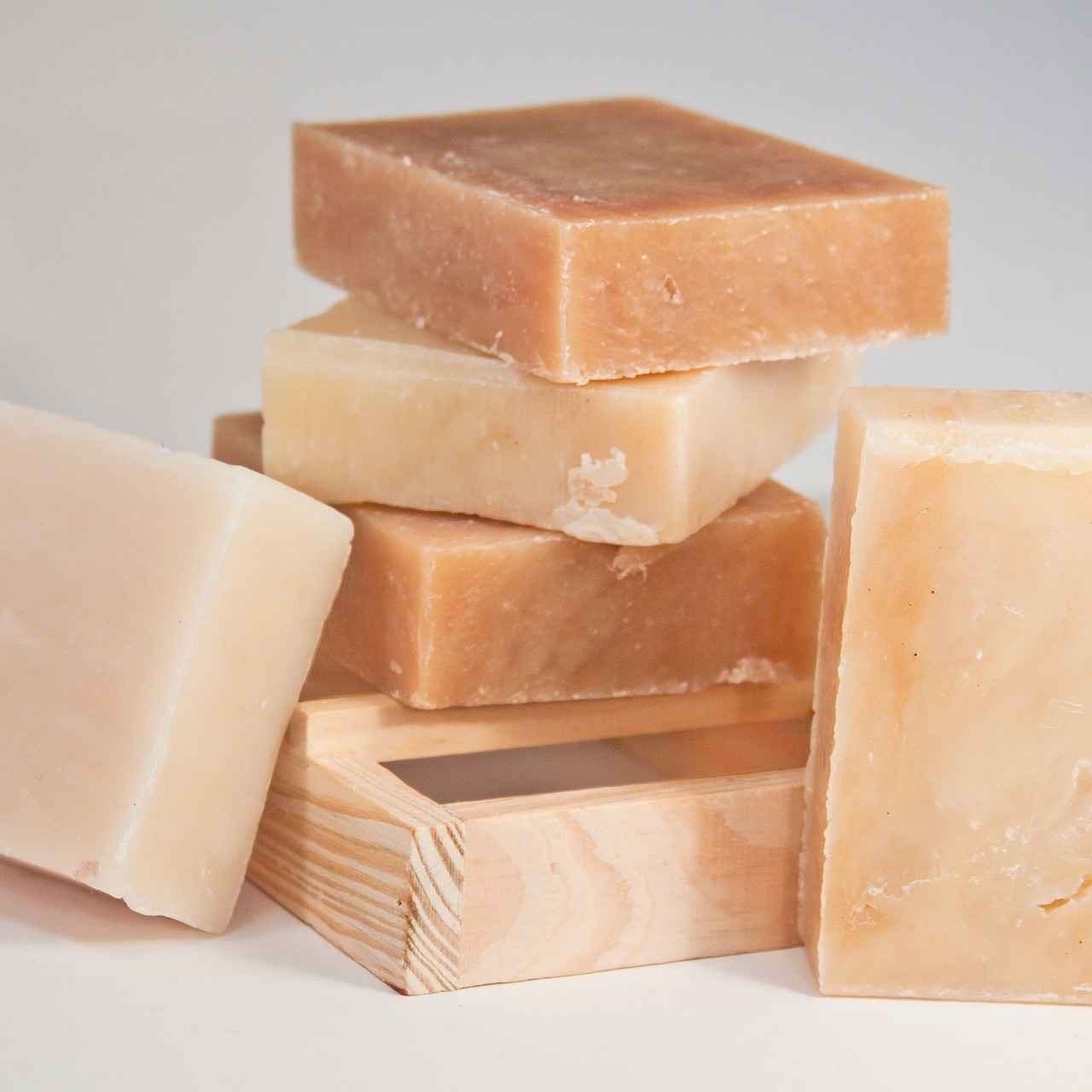This article explores the key differences between home equity loans and Home Equity Lines of Credit (HELOCs), offering insights to help homeowners make informed financial decisions. Understanding these two financial products is essential for homeowners looking to leverage their property equity effectively.
Understanding Home Equity Loans
Home equity loans are designed to provide a lump sum of money that is secured by the equity in your home. Typically, these loans come with fixed interest rates and repayment terms, making them a predictable option for homeowners. The primary benefit of a home equity loan is the ability to access a significant amount of cash upfront, which can be used for various purposes such as home renovations, debt consolidation, or major purchases.
What is a HELOC?
A Home Equity Line of Credit (HELOC) functions differently, allowing homeowners to borrow against their equity as needed. Unlike a home equity loan, a HELOC is a revolving credit line that provides flexibility in borrowing and repayment. This can be particularly useful for ongoing expenses, such as education costs or home improvements, as you only pay interest on the amount you withdraw.
Key Differences Between Home Equity Loans and HELOCs
- Interest Rates: Home equity loans typically have fixed rates, while HELOCs often come with variable rates that can fluctuate over time.
- Payment Structure: Home equity loans require fixed monthly payments, whereas HELOCs may have interest-only payments during the draw period.
- Usage: Home equity loans provide a one-time lump sum, while HELOCs allow for repeated borrowing up to a certain limit.
Factors to Consider When Choosing
When deciding between a home equity loan and a HELOC, several factors should be taken into account:
- Your Financial Goals: Determine whether you need a lump sum for a specific project or ongoing access to funds.
- Credit Score Impact: Your credit score will affect your eligibility and the terms of either option, so it’s crucial to assess and improve your score if necessary.
By understanding the differences and considering your specific needs, you can make an informed decision that aligns with your financial goals.

Understanding Home Equity Loans
Home equity loans are financial products that allow homeowners to borrow a lump sum of money by leveraging the equity built in their homes. This type of loan is secured against the property, meaning that the lender can claim the home if the borrower fails to repay the loan. Understanding how these loans work is crucial for homeowners considering this option for financing.
How Home Equity Loans Function
Typically, home equity loans feature fixed interest rates and a set repayment schedule. Borrowers receive a one-time payment, which they repay over a predetermined period, often ranging from 5 to 30 years. The amount you can borrow usually depends on the equity in your home, which is calculated by subtracting the outstanding mortgage balance from the home’s current market value.
Benefits of Home Equity Loans
- Predictable Payments: Since the interest rate is fixed, monthly payments remain consistent, making budgeting easier.
- Large Lump Sum: Ideal for major expenses such as home renovations, debt consolidation, or significant purchases.
- Potential Tax Benefits: Interest paid on home equity loans may be tax-deductible, depending on how the funds are used.
Potential Drawbacks of Home Equity Loans
- Risk of Foreclosure: Defaulting on the loan can result in losing your home, as it serves as collateral.
- Fees and Closing Costs: Home equity loans may involve various fees, which can add to the overall cost.
- Reduced Equity: Borrowing against your home reduces the equity you have, which can impact future financial decisions.
In summary, while home equity loans can provide significant financial benefits, it is essential to weigh the advantages against the potential risks. Homeowners should carefully consider their financial situation and long-term goals before proceeding with this type of financing.

What is a HELOC?
A Home Equity Line of Credit, commonly referred to as a HELOC, is a flexible borrowing option that allows homeowners to access the equity in their homes as needed. Unlike traditional home equity loans, which provide a lump sum, a HELOC functions more like a credit card, giving homeowners the ability to draw funds up to a predetermined limit over a specified period.
One of the primary features of a HELOC is its revolving credit structure. This means that as you pay down the principal, the available credit increases, enabling you to borrow again without needing to reapply. Typically, HELOCs have a draw period—often lasting 5 to 10 years—during which you can withdraw funds. After this period, the loan enters the repayment phase, where you must start paying back both the principal and interest.
The flexibility of a HELOC is one of its most appealing aspects. Homeowners can use the funds for various purposes, such as home renovations, debt consolidation, or even unexpected expenses. This adaptability makes it an attractive option for those who may not know exactly how much they need to borrow upfront.
Interest rates on HELOCs are often variable, meaning they can change based on market conditions. This can be advantageous when rates are low but may pose risks if rates rise significantly. Homeowners should carefully consider their financial situation and risk tolerance before opting for a HELOC.
In summary, a HELOC offers homeowners a unique way to leverage their home equity, providing both access to funds and the flexibility to meet various financial needs. However, it is essential to understand the terms, potential risks, and how it fits into your overall financial strategy.
How Home Equity Loans Work
Home equity loans are a popular financing option for homeowners looking to leverage the value of their property. These loans are typically secured by the equity in the home, allowing borrowers to access funds at a fixed interest rate. Understanding how home equity loans work is essential for making informed financial decisions.
Application Process
The application process for a home equity loan generally involves several key steps:
- Pre-qualification: Homeowners begin by assessing their eligibility based on their credit score, income, and existing debt.
- Application Submission: Once pre-qualified, borrowers complete a formal application, providing necessary documentation such as income verification and property details.
- Appraisal: Lenders often require an appraisal to determine the current market value of the home, which affects the loan amount.
- Approval and Closing: If approved, borrowers will go through a closing process, where they sign the loan agreement and receive the funds.
Approval Criteria
Lenders evaluate several factors when considering a home equity loan application:
- Credit Score: A higher credit score typically increases the chances of approval and may result in better interest rates.
- Debt-to-Income Ratio: Lenders assess the ratio of monthly debt payments to income to ensure borrowers can manage additional debt.
- Home Equity: The amount of equity in the home plays a crucial role, as lenders usually allow borrowing up to a certain percentage of the home’s value.
Repayment Structure
Home equity loans feature a structured repayment plan:
- Fixed Payments: Borrowers make consistent monthly payments over a predetermined term, typically ranging from 5 to 30 years.
- Interest Rates: These loans usually have fixed interest rates, providing predictability in monthly budgeting.
- Amortization: Payments consist of both principal and interest, gradually reducing the loan balance over time.
Understanding the application process, approval criteria, and repayment structure is vital for homeowners considering a home equity loan. By being informed, borrowers can make confident financial decisions that align with their long-term goals.
Interest Rates and Terms
When considering a home equity loan, it’s essential to understand the interest rates and terms associated with this type of financing. Fixed interest rates are a hallmark of home equity loans, providing borrowers with predictable monthly payments. This stability can be particularly beneficial for homeowners looking to budget effectively over the life of the loan.
The determination of interest rates for home equity loans is influenced by several factors, including the borrower’s credit score, the amount of equity in the home, and current market conditions. Lenders typically assess these elements to gauge the risk involved in lending. A higher credit score can lead to lower interest rates, making it crucial for homeowners to maintain a good credit profile.
Furthermore, the loan-to-value ratio (LTV) plays a significant role in interest rate determination. LTV is calculated by dividing the loan amount by the appraised value of the home. A lower LTV indicates less risk for the lender, often resulting in more favorable interest rates. Homeowners should aim for an LTV of 80% or less to secure the best rates.
In terms of repayment, home equity loans generally offer fixed terms ranging from 5 to 30 years. This means that borrowers can expect consistent payments throughout the loan period, which aids in financial planning. Typically, the repayment structure consists of both principal and interest, ensuring that the loan is paid off by the end of the term.
Overall, understanding the intricacies of interest rates and terms associated with home equity loans is vital for homeowners. By being informed about how these rates are set and the implications of different terms, borrowers can make more educated decisions regarding their financing options.
Pros and Cons of Home Equity Loans
When considering financial options, home equity loans present both notable advantages and potential drawbacks. Understanding these aspects is crucial for homeowners looking to leverage their property’s value effectively.
Advantages of Home Equity Loans:
- Predictable Payments: Home equity loans typically come with fixed interest rates, ensuring that monthly payments remain stable throughout the loan term. This predictability aids in budgeting and financial planning.
- Lump Sum Availability: Borrowers receive a one-time payment, which can be beneficial for large expenses such as home renovations, debt consolidation, or major purchases.
- Potential Tax Benefits: In some cases, the interest paid on home equity loans may be tax-deductible, depending on how the funds are used and current tax laws.
Disadvantages of Home Equity Loans:
- Risk of Foreclosure: Since home equity loans are secured by the home itself, failure to repay the loan can lead to foreclosure, putting the homeowner’s property at risk.
- Fees and Closing Costs: Home equity loans often come with various fees, including appraisal, origination, and closing costs, which can add to the overall expense of borrowing.
- Debt Accumulation: Borrowing against home equity can lead to increased debt levels, especially if homeowners take on additional loans or fail to manage their finances effectively.
In summary, while home equity loans offer predictable payments and the convenience of a lump sum, they also carry risks such as potential foreclosure and associated costs. Homeowners should carefully weigh these factors before deciding on this financial option.
Understanding HELOC Structures
When it comes to financing options for homeowners, understanding the nuances of a Home Equity Line of Credit, or HELOC, is essential. Unlike traditional loans, HELOCs provide a revolving credit line that allows homeowners to borrow against their home equity as needed. This flexibility makes HELOCs a popular choice for those looking to manage expenses over time.
A typical HELOC is structured with two distinct phases: the draw period and the repayment period. During the draw period, which usually lasts 5 to 10 years, homeowners can withdraw funds up to their credit limit. This phase is particularly advantageous for those who may require funds for ongoing projects or unexpected expenses, as it allows for flexible borrowing. Homeowners only pay interest on the amount they draw, making it a cost-effective solution during this phase.
After the draw period ends, the HELOC transitions into the repayment phase, which can last 10 to 20 years. During this time, borrowers must start repaying both the principal and interest, which can lead to significantly higher monthly payments. This structure is crucial for homeowners to understand, as it can impact their financial planning and budgeting.
| Feature | HELOC | Home Equity Loan |
|---|---|---|
| Credit Access | Revolving credit line | Lump sum payment |
| Interest Payments | Interest on drawn amount | Fixed interest on full amount |
| Flexibility | High | Low |
| Repayment Period | Varies (10-20 years) | Fixed terms (5-30 years) |
In addition to the structure, HELOCs often come with variable interest rates, which can fluctuate based on market conditions. This aspect can be both a benefit and a risk; while borrowers may enjoy lower rates initially, they must be prepared for potential increases over time. Understanding these elements can help homeowners make informed decisions about leveraging their home equity effectively.
Repayment Terms of HELOCs
When considering a Home Equity Line of Credit (HELOC), it’s essential to understand the repayment terms, which can differ greatly from traditional loans. These terms typically encompass two main phases: the draw period and the repayment period.
The draw period is the initial phase during which homeowners can borrow against their line of credit. This period usually lasts between 5 to 10 years, allowing for flexibility in accessing funds as needed. During this time, borrowers often have the option to pay only the interest on the amount drawn, which can result in lower monthly payments. However, it’s crucial to remember that this can lead to a larger balance remaining when the draw period ends.
Once the draw period concludes, the HELOC transitions into the repayment period, which can last anywhere from 10 to 20 years. During this phase, homeowners are required to pay back both the principal and interest on the outstanding balance. This shift can significantly increase monthly payments, making it vital for borrowers to plan their budgets accordingly.
Homeowners should also consider the implications of these repayment terms. For example, if a borrower has only paid interest during the draw period, they may face a substantial increase in payments once they enter the repayment phase. This can strain finances if not anticipated. Additionally, fluctuations in interest rates during the repayment period can affect overall costs, as most HELOCs have variable interest rates.
In summary, understanding the repayment terms of a HELOC is critical for homeowners. The transition from the draw to repayment period can have significant financial implications, making it essential to plan ahead and stay informed about the terms of the credit line.

Key Differences Between Home Equity Loans and HELOCs
When navigating the world of home financing, understanding the key differences between home equity loans and Home Equity Lines of Credit (HELOCs) is essential for homeowners. Each option offers distinct features that cater to different financial needs and situations. This section delves into a comparison of these two types of loans, focusing on interest rates, payment structures, and usage scenarios.
| Feature | Home Equity Loan | HELOC |
|---|---|---|
| Loan Structure | Lump sum payment | Revolving credit line |
| Interest Rates | Fixed | Variable |
| Repayment Terms | Set repayment schedule | Flexible repayment options |
| Usage | One-time large expenses | Ongoing expenses or projects |
Interest Rates: Home equity loans generally come with fixed interest rates, providing predictable monthly payments. In contrast, HELOCs often have variable rates that can fluctuate based on market conditions, which may lead to uncertainty in monthly payments over time.
Payment Structures: With home equity loans, homeowners make consistent payments over a fixed term, making budgeting easier. HELOCs, however, allow for more flexibility, as borrowers can withdraw funds as needed during the draw period and only pay interest on the amount used.
Usage: Home equity loans are ideal for significant one-time expenses, such as home renovations or debt consolidation. HELOCs, on the other hand, are suited for ongoing expenses, such as funding education or managing cash flow, as they provide more financial flexibility.
By understanding these fundamental differences, homeowners can make an informed choice that aligns with their financial goals and needs.
Interest Rate Comparisons
When considering financing options such as home equity loans and Home Equity Lines of Credit (HELOCs), interest rates play a pivotal role in the decision-making process. Understanding the differences between fixed and variable interest rates can significantly impact the overall cost of borrowing.
Fixed interest rates offer borrowers the advantage of predictable monthly payments. Once locked in, the rate remains unchanged throughout the life of the loan, providing stability and ease of budgeting. This predictability can be particularly beneficial for homeowners who prefer a structured repayment plan without the worry of fluctuating payments.
On the other hand, variable interest rates can start lower than fixed rates, offering immediate savings. However, these rates are subject to change based on market conditions, which means monthly payments can increase or decrease over time. This variability can lead to substantial savings during periods of low interest rates but can also result in higher costs if rates rise.
| Feature | Fixed Interest Rates | Variable Interest Rates |
|---|---|---|
| Payment Stability | High | Low |
| Initial Rate | Higher | Lower |
| Long-term Cost | Predictable | Variable |
| Market Sensitivity | Insensitive | Sensitive |
Ultimately, the choice between fixed and variable rates should align with your financial situation and risk tolerance. Homeowners who value stability may lean towards fixed rates, while those willing to take risks for potentially lower initial costs might consider variable rates. Carefully weighing these options can lead to more informed and financially sound decisions.
Flexibility and Usage
When considering financing options, understanding the flexibility and usage of Home Equity Lines of Credit (HELOCs) versus home equity loans is crucial for homeowners. Each option serves distinct purposes, catering to various financial needs.
A home equity loan typically provides a lump sum of money, which is beneficial for large, one-time expenses such as home renovations, debt consolidation, or major purchases. This fixed amount is secured against the equity of your home, and borrowers repay it in fixed monthly installments over a predetermined period. While this structure offers predictability in budgeting, it lacks the flexibility to access funds beyond the initial loan amount.
In contrast, a HELOC operates more like a credit card, allowing homeowners to borrow against their home equity as needed. This option is particularly advantageous for ongoing expenses, such as covering tuition fees, medical bills, or home maintenance costs. The revolving credit line means that homeowners can withdraw funds up to a certain limit, repay them, and borrow again without needing to reapply. This flexibility can be incredibly beneficial for managing fluctuating expenses or unexpected financial needs.
| Feature | Home Equity Loan | HELOC |
|---|---|---|
| Loan Structure | Lump sum | Revolving credit line |
| Repayment | Fixed monthly payments | Variable payments based on usage |
| Usage | One-time expenses | Ongoing expenses |
Ultimately, the choice between a home equity loan and a HELOC will depend on individual financial situations and goals. Homeowners should carefully assess their needs and consider how each option aligns with their long-term financial strategies.

Factors to Consider When Choosing
When deciding between a home equity loan and a Home Equity Line of Credit (HELOC), several critical factors come into play. Understanding these factors can help homeowners make informed decisions that align with their financial goals.
- Financial Goals: Your specific financial objectives are paramount. Are you looking for a one-time lump sum for a major expense, such as home renovations or debt consolidation? A home equity loan may be the better choice. Conversely, if you need access to funds over time, a HELOC offers the flexibility to draw on your credit line as needed.
- Credit Score: A strong credit score can significantly impact your loan options. Lenders often offer better interest rates and terms to borrowers with higher credit scores. Assess your credit report and consider taking steps to improve your score before applying, as this can lead to more favorable loan conditions.
- Market Conditions: The current economic climate can affect interest rates and loan availability. If interest rates are low, locking in a fixed rate with a home equity loan might be advantageous. However, if rates are expected to rise, a HELOC with a variable rate might be a more flexible option.
- Repayment Structure: Understanding how repayment works for each option is crucial. Home equity loans typically have fixed monthly payments, making budgeting easier. In contrast, HELOCs often have interest-only payments during the draw period, which can lead to larger payments later on.
- Risk Tolerance: Consider your comfort level with debt. Home equity loans provide predictability, while the variability of HELOCs can be risky if rates fluctuate. Ensure that your choice aligns with your risk tolerance and financial stability.
By carefully evaluating these factors, homeowners can make a well-informed decision that best suits their unique financial situations.
Your Financial Goals
When it comes to making significant financial decisions, understanding your financial objectives is essential. Your goals will not only shape your approach to borrowing but also influence the type of loan that best suits your needs. This section will delve into how different financial aspirations can guide your choice between a home equity loan and a Home Equity Line of Credit (HELOC).
First and foremost, consider whether you need a lump sum for a specific purpose, such as home renovations or debt consolidation. If so, a home equity loan may be the ideal option, as it provides a fixed amount of money upfront, allowing you to tackle your project immediately. On the other hand, if your needs are more flexible—perhaps you want to fund ongoing expenses like education or medical bills—a HELOC could be more appropriate. This option allows you to borrow as needed, giving you the freedom to access funds over time.
Another critical aspect to evaluate is your repayment capacity. Home equity loans typically have fixed monthly payments, which can make budgeting easier. Conversely, HELOCs often come with variable rates and flexible payment options during the draw period, but they can lead to uncertainty in monthly expenses. Understanding your comfort level with financial variability is key in making the right choice.
Additionally, your long-term financial strategy plays a significant role. If you plan to stay in your home for many years, locking in a fixed rate with a home equity loan may be beneficial. However, if you anticipate changes in your financial situation or housing plans, the adaptability of a HELOC could better align with your evolving needs.
Ultimately, assessing your financial goals involves a deep understanding of your current situation and future aspirations. By carefully considering these factors, you can make an informed decision that aligns with your financial objectives and helps you achieve your dreams.
Credit Score Impact
Your credit score plays a crucial role in determining your eligibility for loans, including home equity loans and Home Equity Lines of Credit (HELOCs). Understanding how to assess and improve your credit score can significantly enhance your chances of securing favorable loan terms.
Assessing Your Credit Score
Before applying for a home equity loan or HELOC, it is essential to evaluate your credit score. You can obtain a free credit report from major credit bureaus, which will provide insights into your credit history, outstanding debts, and payment patterns. A score typically ranges from 300 to 850, with scores above 700 generally considered good. Here are key factors that influence your credit score:
- Payment History: Timely payments on debts boost your score, while late payments can harm it.
- Credit Utilization: This ratio compares your total credit card balances to your total credit limits. Keeping it below 30% is advisable.
- Length of Credit History: A longer credit history can positively impact your score.
- Types of Credit: A mix of credit types, such as credit cards, mortgages, and installment loans, can be beneficial.
- New Credit Inquiries: Frequent applications for new credit can lower your score temporarily.
Improving Your Credit Score
If your credit score is less than ideal, there are several strategies you can employ to improve it:
- Pay Bills on Time: Establishing a consistent payment schedule can significantly enhance your score.
- Reduce Debt: Focus on paying down existing debts, particularly high-interest credit cards.
- Limit New Credit Applications: Avoid applying for new credit cards or loans before your loan application.
- Check for Errors: Regularly review your credit report for inaccuracies and dispute any errors you find.
By taking these steps, you can improve your credit score and increase your chances of securing a loan with favorable terms, whether you choose a home equity loan or a HELOC.
Frequently Asked Questions
- What is the main difference between a home equity loan and a HELOC?
The primary difference lies in their structure: a home equity loan provides a lump sum of money with fixed payments, while a HELOC offers a revolving line of credit that you can draw from as needed, similar to a credit card.
- Are the interest rates the same for home equity loans and HELOCs?
No, they typically differ. Home equity loans usually have fixed interest rates, making them stable over time. In contrast, HELOCs often have variable rates, which can fluctuate based on market conditions, potentially leading to higher costs.
- How can I decide which option is best for my financial needs?
Consider your financial goals: if you need a one-time cash infusion for a large expense, a home equity loan might be better. However, if you want flexibility for ongoing projects or expenses, a HELOC could be the way to go.
- Will my credit score affect my ability to get a home equity loan or HELOC?
Absolutely! Your credit score plays a crucial role in determining your eligibility and the interest rates you’ll receive. A higher score generally means better terms, so it’s wise to check and improve your score before applying.
- What happens if I can’t repay my home equity loan or HELOC?
If you fail to make payments, you risk foreclosure, as both loans are secured by your home. It’s essential to assess your repayment ability and seek financial advice if you’re unsure.




